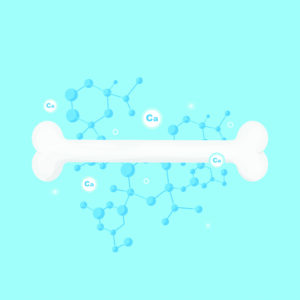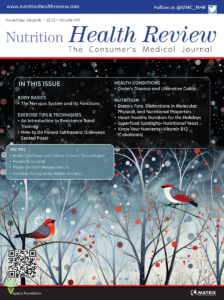
Human bodies do not make the mineral calcium, which develops strong bones, muscles, the heart, and nerves.1 Besides milk, which is commonly thought to be the only primary source for calcium, patients can also get calcium through a variety of different foods including broccoli, brussels sprouts, kale, and beans.2 Each of these foods have high amounts of calcium and other nutrients that can help maintain strong bones.2 If there’s a lack of calcium in a person’s daily diet, the body will take calcium from the bones, which will cause the bones to become weaker, more fragile, and be at a higher risk for fractures, known as the disease osteoporosis.1
Calcium intake through milk and other dairy products is critical for all ages, but especially for children and adolescents as their bone mass is at crucial development stages during these stages of life.3 Dairy products contain not only calcium but vitamins A, D, and B12, protein, potassium, and magnesium.4 Milk accounts for 22 percent of the United States’ population’s daily calcium intake.4
Infants aged 0 to 6 months need 200mg of calcium per day; infants aged 6 to 12 months need 260mg of calcium per day; children aged 1 to 3 need 700mg of calcium per day; children aged 4 to 8 need 1,000mg per day; and preteens, teens, and young adults aged 9 to 18 need 1,300mg of calcium per day.1
For both men and women from ages 19 to 50, the recommended daily intake of calcium is 1,000 milligrams/day.4 For women 51 and older, the recommended daily intake of calcium is 1,200 milligrams/day.2 For patients 65 years and older, regular intake of dairy products is still recommended to avoid osteoporosis.3 Since older patients are more likely to be lactose intolerant, the recommended food groups are fermented milk and yogurt or lactose-free milk instead.3
In childhood and young adulthood, bones grow bigger and stronger overtime, leading to an increase in bone mass.5 Peak bone mass is reached in adults by lates 20s to early 30s.5 Thereafter, the bone mass that people have begins to lessen progressively; the rate of bone breakdown occurs faster than new bone growth.5 Postmenopausal women are the most at risk for developing osteoporosis due to the rapid decline in estrogen—a key component in maintaining strong bones.5 While more common in women, men are also at risk of developing osteoporosis as they age.5
Patients who have pre-existing low bone density and low bone strength are especially at risk for osteoporosis as they age.6 Men have greater bone masses than women which puts women more at risk for developing osteoporosis—especially after menopause.6
Bones rebuild in adults every decade as older bones are broken down and new bones are formed.6 Loss of bone mass is linked to an imbalance of old bones breaking down and new bones forming—which is an inevitable process of aging.6 However, there are ways for both female and male patients to reduce their risk for osteoporosis and help maintain and rebuild strong, healthy bones.6
Patients are more at risk for osteoporosis if they are not getting enough calcium in their daily diets5, yet the intake of calcium alone is not enough to maintain strong bones.2 Dietary and physical health choices are important to maintaining the calcium level in the bones.2
Reduce sodium intake by cutting down on salty snacks and canned foods with added sodium as well as processed meats, cold cuts, and cheeses.2 The calcium in the bones breaks down into the bloodstream before passing through the kidneys to the urine—therefore, a reduction of sodium intake will lessen the amount of calcium the bones lose.2 Women are more at risk for osteoporosis than men due to the drop in estrogen levels leading up to, during, and after menopause.7
Weight training, biking, and running stimulates osteoblasts—cells that build new bone. Exercise also helps to increase blood flow in turn providing more oxygen to the body’s tissues, muscles, and bones.5 Blood flow is essential to help deliver the nutrients to the bones to help stimulate new bone growth.5 Together, calcium and vitamin D can help protect against osteoporosis and maintain healthy bones for at-risk adults.5
References
National Institute of Arthritis and Musculoskeletal and Skin Diseases (NIAMS). Calcium and vitamin d: important for bone health. National Institutes of Health. Reviewed May 2023. https://www.niams.nih.gov/health-topics/calcium-and-vitamin-d-important-bone-health Accessed 30 Apr 2024.
Physicians Committee for Responsible Medicine. Calcium and strong bones. pcrm.org. 2024. https://www.pcrm.org/good-nutrition/nutrition-information/health-concerns-about-dairy/calcium-and-strong-bones. Accessed 17 Apr 2024.
Ratajczak AE, Zawada A, Rychter AM, et al. Milk and dairy products: good or bad for human bone? Practical dietary recommendations for the prevention and management of osteoporosis. Nutrients. 2021;13(4):1329.
Gutierrez E, Metcalfe JJ, Prescott MP. The relationship between fluid milk, water, and 100% juice and health outcomes among children and adolescents. Nutrients. 2022;14(9):1892.
Gunter J. Is Drinking Milk Essential for Building Strong Bones? Ted Talk. 9 Jun 2021. https://www.ted.com/podcasts/body-stuff-is-drinking-milk-essential-for-building-strong-bones-transcript#:~ Accessed 17 Apr 2024.
National Institute of Arthritis and Musculoskeletal and Skin Diseases (NIAMS). Osteoporosis in Men. National Institutes of Health. Reviewed May 2023. https://www.niams.nih.gov/health-topics/osteoporosis-men Accessed 30 Apr 2024.
National Osteoporosis Foundation. Hormones and Healthy Bones. Bone Health and Osteoporosis. Updated 2009. https://www.bonehealthandosteoporosis.org/wp-content/uploads/2016/02/Hormones-and-Healthy-Bones.pdf Accessed 30 Apr 2024.





